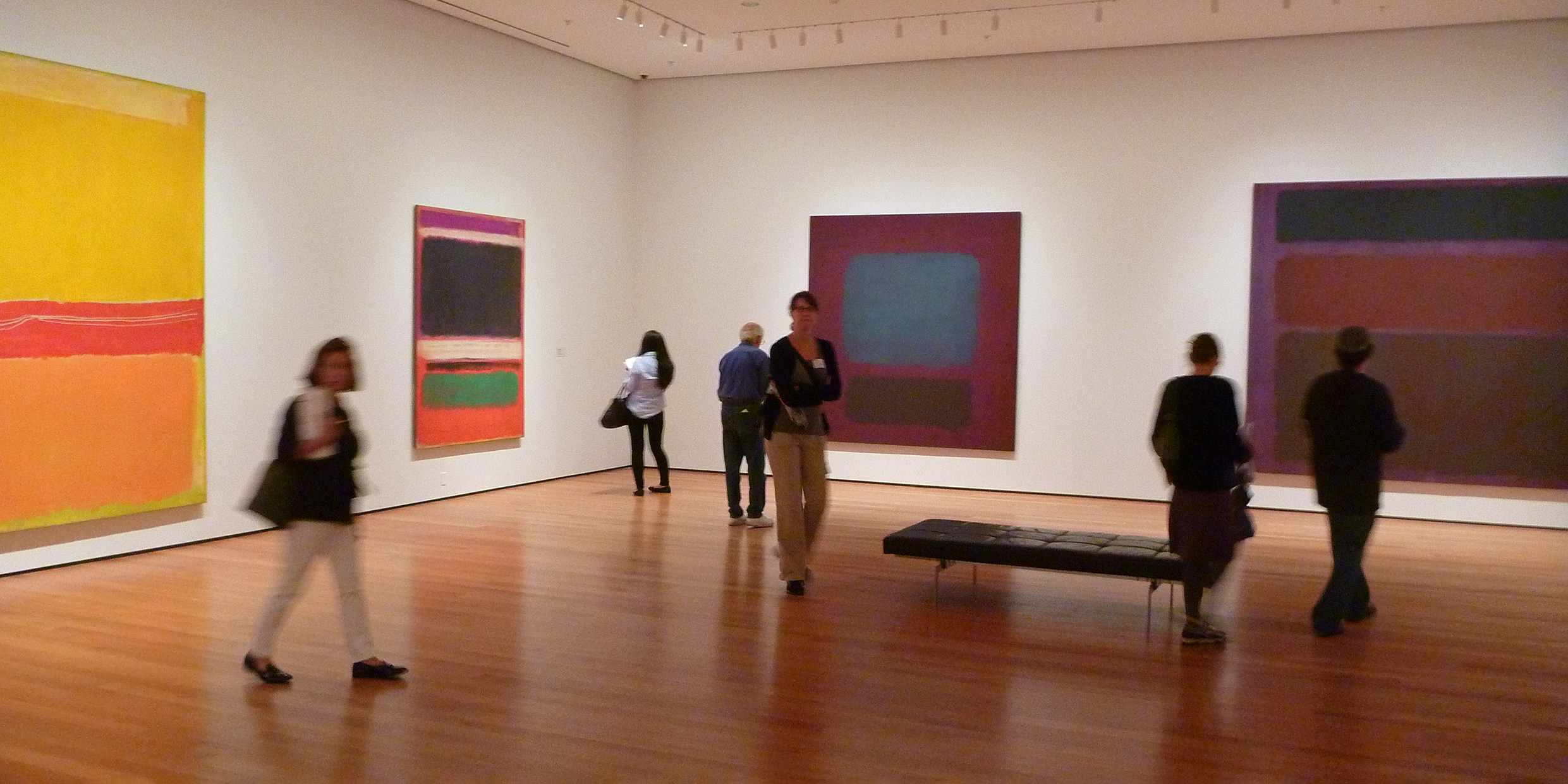Originally published 27 April 2008
One thing (of many) that my son (and our webmaster) Tom and I share is an admiration for the paintings of Mark Rothko—those big iconic canvases with blurry rectangles of floating color. I’ve stood before them in several galleries, rapt, my feet rooted to the ground, my heart thumping. No other artist among the abstract expressionists has the same power to hold my attention.
It’s hard to say exactly what I feel, especially when in the presence of several Rothkos. Whatever it is starts in the gut and only slowly makes its way to the brain, and down the legs to where feet meet earth. I’ve read a number of critics who have tried to explain the power of Rothko’s works, none satisfactorily. The best explanation I have come across is in something the artist himself wrote in the early 1940s, before the rectangles, before his fame, in a little book called The Artist’s Reality that was only published 34 years after his death.
He talks about science, philosophy, and art, what they have in common, how they differ, and in particular he skates the slippery boundary between the subjective and objective. He writes: “[The artist] must reduce all of the subjective and objective with the end of informing human sensuality. He tries to give human beings direct contact with eternal verities through reduction of those verities to the realm of sensuality, which is the basic language for the human experience of things…Sensuality stands outside of both the objective and subjective. It is the ultimate instrument to which we must first refer all our notions, whether they be abstract, the result of direct experience or of some circuitous reference to such experience. Sensuality is our index to reality.”
Sensuality. Not sensation, which Rothko carefully distinguishes from sensuality. Not abstraction. The validation of our experience of reality comes from the “tactile” quality of ideas or substances, he says. What he is talking about is bound up with our biological nature as sexual beings: “That the sensual is so closely interlaced with the entire mechanics of procreation is further evidence that man in his most profound biological functions is impelled by his sense of touch.”
In his iconic paintings, Rothko somehow tapped into something more biological than intellectual, more tactile than abstract. He stirs up emotions deep in the brain stem where raw sensation meets the dawning mind. One can no more “explain” the power of a Rothko painting than one can “explain” a spontaneous rush of erotic desire.
Not just in art but in science and philosophy too the proponents of subjectivity and objectivity must equally appeal to sensuality to confirm the validity of their ideas, says Rothko. And surely he is right that too often we forget that we are first of all procreational creatures and that touch is our primary sense.
It is not by chance that humankind’s first attempt at making sense of the stars was to impose upon them the figures of gods and goddesses. Those ancient constellations have receded from the foreground of science, but even such apparently abstract concepts as matter and energy are surely rooted in the body. Perhaps mathematics transcends biology, but not much else floats free of our sensual natures. There may be more to the old medieval notion of microcosm and macrocosm than we care to admit.
In the last years of his life, Rothko’s paintings moved towards a darker, more tragic view of reality, some would say a more spiritual view, although not in a supernatural sense; his work remains anchored in nature. Then, at the very end, the last vestiges of color give way to black and gray. The floating rectangles become fixed to their frames. Background and foreground merge. Luminosity becomes opacity. There is a sense of a horizon, but what lies over the horizon is uncertain. In her catalog/book for the 1978 Guggenheim retrospective of Rothko’s work, Diane Waldman, Curator of Exhibitions at the Guggenheim, writes of the final works: “No longer is his art earthbound, sensual, corporeal…He had left behind all that spoke of the carnate, the concrete. He had reached the farther shore of art.” This, presumably, represents some sort of triumph — a transcendence of the spirit over its worldly limitations — but that’s not the way I see it.
In the months before his suicide in 1970, at age 66, Rothko was depressed by bad health, drink, and family troubles. It is true that his final paintings leave sensuality behind. But they do not transcend the earthbound and concrete. If anything, they become more earthbound, more concrete. The last paintings look like nothing so much as concrete walls. The biological “index to reality” he looked for as a young man is gone. Rothko has lost the sensual. He is overwhelmed by sensation. It is not so much that a fire has gone out in his work as that it is thickly veiled. If there is an eternal verity in these last paintings it is the finality of death.
Which does not make them any less important as documents of the human spirit. What they affirm as strongly as the earlier paintings is the importance of sensuality as an “index of reality” — and the risks of letting spirit lose from its moorings in the flesh.



